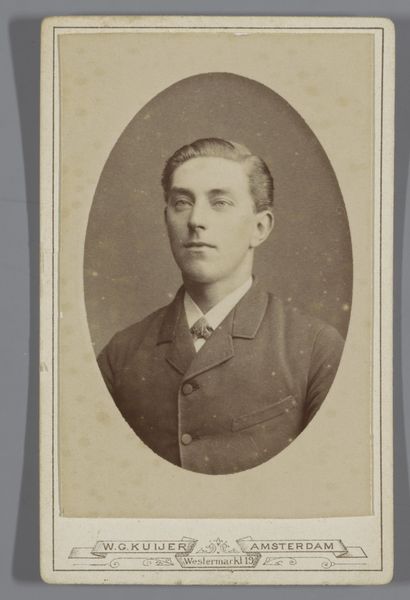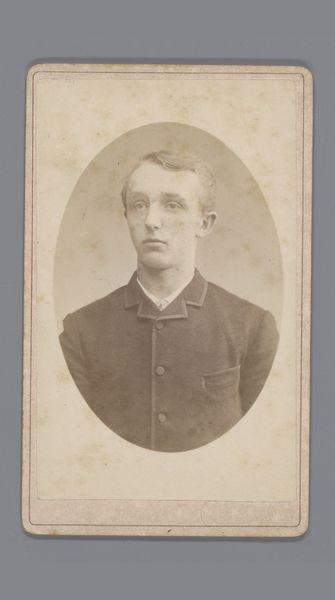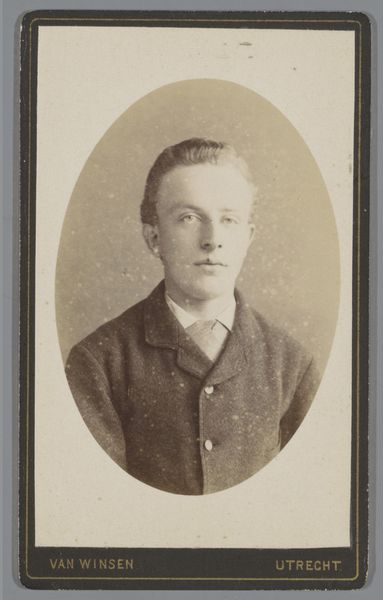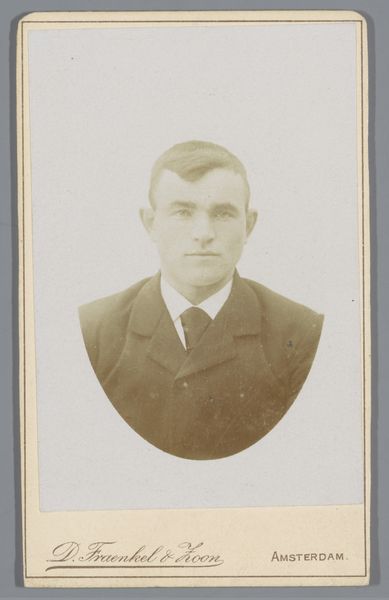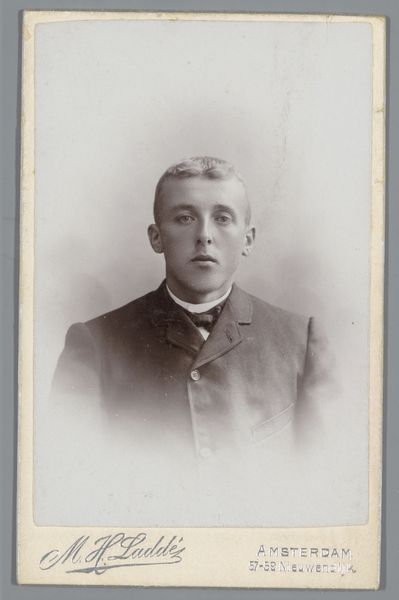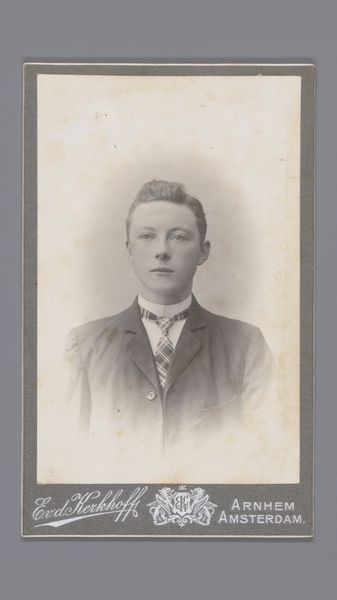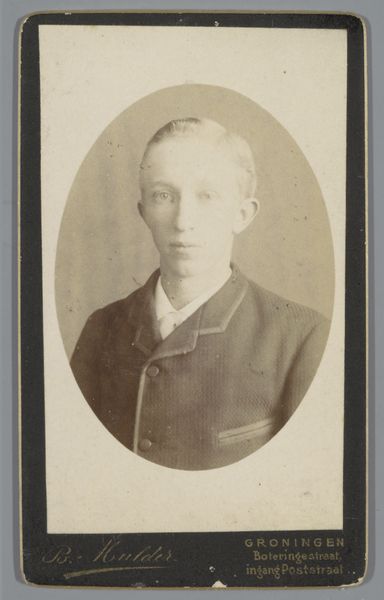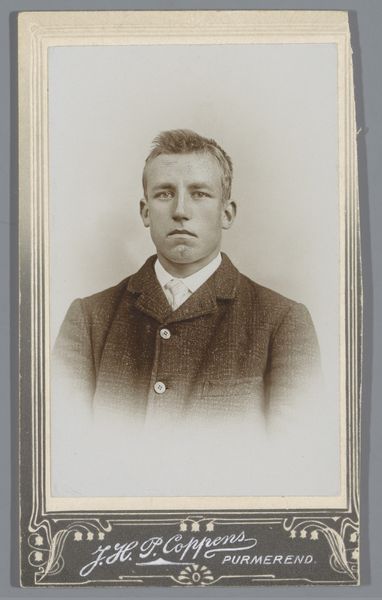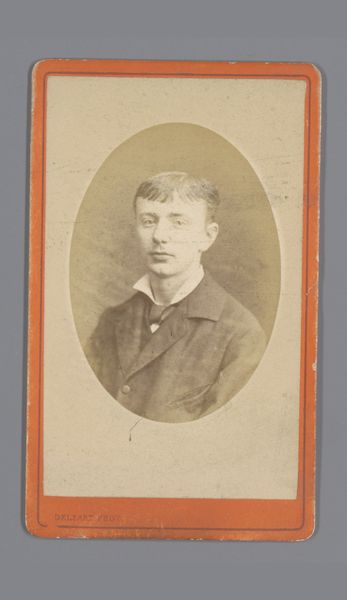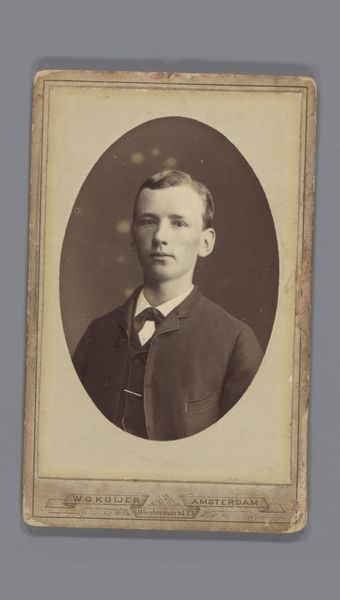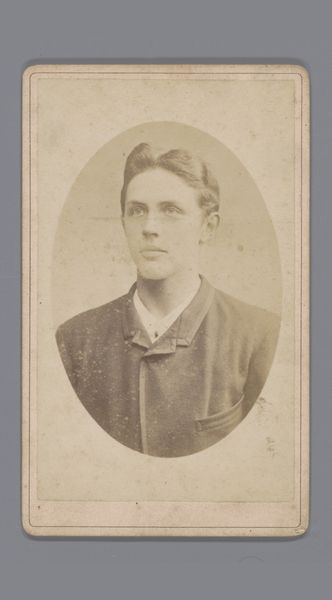
paper, photography, gelatin-silver-print
#
portrait
#
paper
#
photography
#
gelatin-silver-print
Dimensions: height 104 mm, width 64 mm
Copyright: Rijks Museum: Open Domain
Editor: We're looking at "Portrait of an Unknown Man" by Johannes Laurens Theodorus Huijsen, created sometime between 1880 and 1882. It's a gelatin silver print on paper. The man’s gaze is so direct. It’s a very simple composition, but he holds my attention. How do you interpret this work? Curator: I see a quiet resilience in his eyes, a depth that belies the simplicity of the photographic style. Think about the context: late 19th century. Photography was becoming more accessible, allowing for a broader segment of society to participate in portraiture. It’s not just about capturing a likeness; it's about self-presentation. Do you notice anything specific in his clothing or the setting? Editor: He is wearing a suit. I'd say that he belonged to the middle class because, if he were too rich, he would have gotten his portrait painted rather than photographed. Curator: Exactly. And the suit signifies more than just class. It speaks to the era’s burgeoning sense of individual identity. Consider, the oval shape itself, like a locket containing a memory. Photography's move from avant-garde to a way of remembering… it lends the image an iconic feel. Think of the images families keep of loved ones. Editor: So, this photograph preserves not just the man’s appearance but a sense of who he might have been and what he might have valued? Curator: Precisely. This image invites us to consider him as a symbol of broader societal shifts: expanding access, solidifying identity, and preserving memory. Editor: That’s fascinating! I hadn’t thought about it in terms of cultural shifts, but that really changes how I see the portrait. Curator: Art invites us to ask questions about who we are and how we see ourselves within the larger story.
Comments
No comments
Be the first to comment and join the conversation on the ultimate creative platform.
